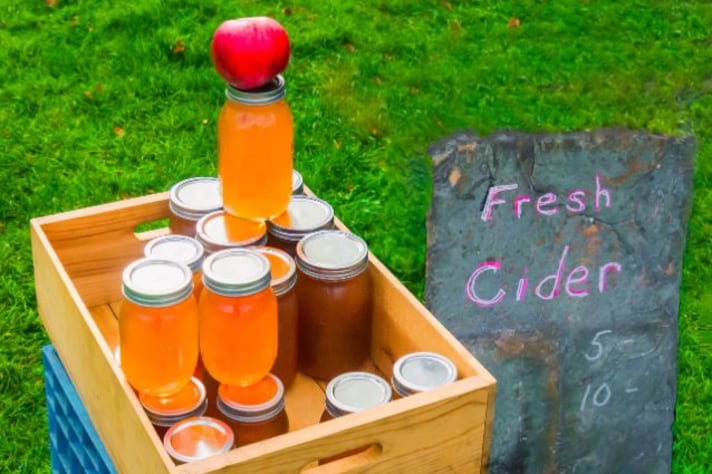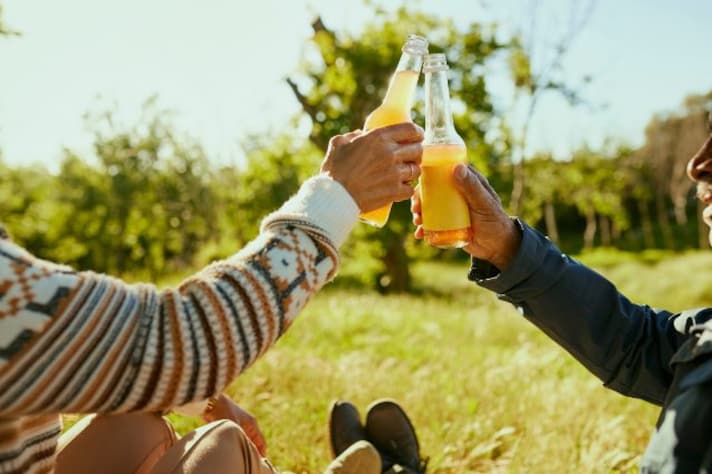
As the air cools and the leaves turn, few things signal autumn like the arrival of apple cider. Sure, the fall season's warm beverages may star the famed pumpkin spice latte, but cold, crisp apple cider takes a top spot for its refreshing, natural appeal. However, before you take a gulp of that orchard-sourced cider, there’s a good question to ask: is it safe?
While most commercial cider is pasteurized to ensure it’s safe to drink, you might come across something a little different at your local farmers’ market: UV-treated apple cider. You won’t see the familiar “pasteurized” label, but you might find “UV-treated” in its place, leaving some shoppers scratching their heads. What does UV-treated mean, and, most importantly, is it safe?
Why Does Apple Cider Need to be Treated?
For many, apple cider seems like just another fresh juice—a pure, simple squeeze of apples in a bottle, right? Not quite. Unlike your average apple juice, which is filtered and often heat-treated, fresh cider is raw and unfiltered. And while that rawness preserves some of the flavor complexity that cider fans love, it also opens the door to potential bacteria, like E. coli, that can sneak into any unpasteurized juice. So, before you start sipping, it’s crucial to ensure the cider is treated to avoid any unpleasant (or downright dangerous) surprises. And while heat pasteurization has long been the gold standard for treating juices and ensuring safety, UV treatment offers a different, intriguing approach.

What Does UV-Treated Mean?
When it comes to UV treatment, think of it as a laser-light show for your cider, but one that’s invisible and entirely functional. During the UV treatment process, the cider passes under high-intensity ultraviolet lights that disrupt the DNA of harmful microbes. This process doesn’t generate heat, so the cider stays refreshingly raw in texture and taste.
Developed initially as a more natural approach to food safety, UV treatment has become popular among smaller cider producers, especially those who want to offer a product that’s close to nature without compromising on safety. But don’t let the word “radiation” (or “ultraviolet”) raise your eyebrows. The UV process is rigorously tested and meets food safety standards for deactivating bacteria and viruses without impacting the drink’s quality.
Is UV Treatment Just Pasteurization Under a Different Name?
In a way, UV treatment and pasteurization serve the same purpose: ensuring the cider is safe to drink. However, they are far from identical processes. Traditional pasteurization involves heating the juice to a specific temperature to kill harmful bacteria. This method works well, but it can slightly alter the cider’s taste and texture, leaving it a bit less crisp. In contrast, UV treatment doesn’t alter the cider’s temperature, preserving that fresh, just-picked flavor and keeping it closer to the texture of raw cider.

Is UV-Treated Apple Cider Safe to Drink?
Here’s the million-dollar question: is UV-treated cider as safe as its pasteurized counterpart? The short answer is yes. The FDA and USDA have both evaluated and approved UV treatment as an effective method to sanitize juices, including apple cider. Studies, including those from Michigan State University’s Extension, confirm that UV treatment effectively reduces pathogens, making it a viable and safe option.
In fact, you’ll find UV treatment commonly used in juices, dairy, and even drinking water for its safety benefits and its ability to maintain natural flavors. So, if you find UV-treated cider at a local market, it’s as safe as any pasteurized product on the shelves. That said, as with all fresh products, once opened, it’s best to keep UV-treated cider refrigerated and consume it promptly to enjoy it at its best.
;Resize,width=767;)
